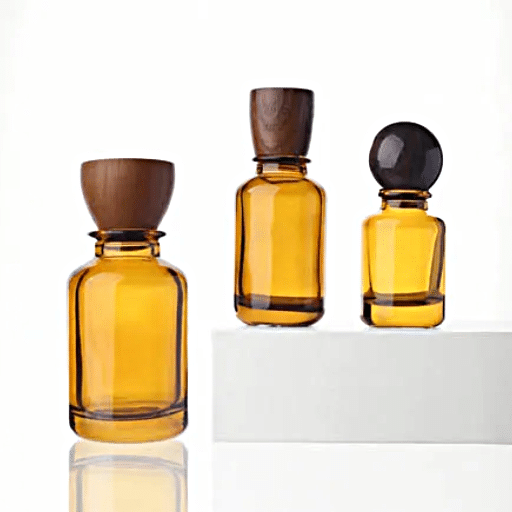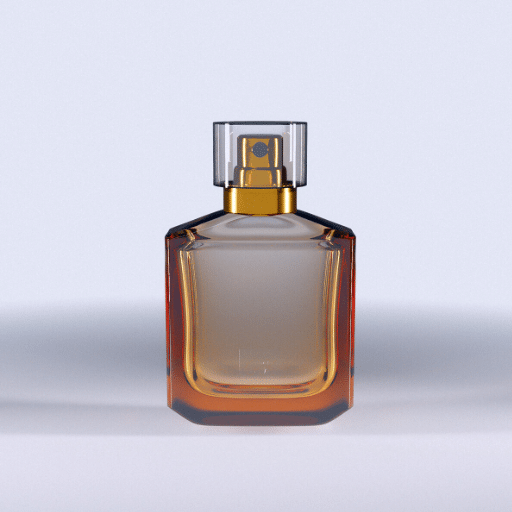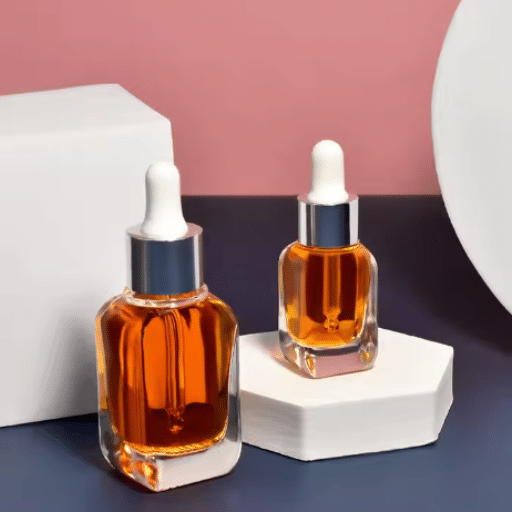It might seem like a challenging task to transport perfume bottles globally because the process requires the importer to move quickly during the logistical phase, follow the rules closely, and implement best practices efficiently. Everything has to be done prudently, from the choice of the packaging solution to preventing pour-out and breakage events. In other words, a deliberate plan must be pursued in every way so that the delicate items are indeed safe and delivered as planned. This piece seeks to provide a detailed account of international shipping of perfume, thereby helping carriers manage the technical and operational aspects while meeting consumer demand by complying with business requirements. It gives the perfume business owner and the gift shipper guidance and insight along the journey, thereby minimizing errors and ensuring victory in the end.
Understanding the Shipping Process for Perfume Bottles
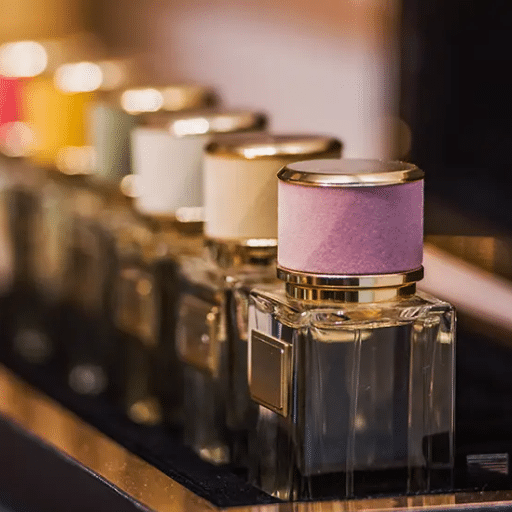
Check Regulatory Restrictions
The very first thing to do is verify the restrictions and regulations: Perfume bottles are no strangers to being classified as hazardous due to the alcohol they contain, which is highly flammable. Check both your country’s and the destination country’s laws to make sure everything is legal.
Choose Proper Packaging
The second thing you are going to do is take time to choose the right packaging materials: the package should be adequately sealed and protected from the outside environment. The packaging must be in line with International Air Transport Association (IATA) standards if the shipping route is by air.
Label Shipments Correctly
The third step is to ensure that your shipment is labeled correctly: the package must be clearly marked as containing delicate products and flammable items. Other labels required by the carriers or government should also be included.
Select a Reliable Carrier
In the next step, you will be picking the most established shipping company to work with. Transporters who have served the industry for years in handling hazardous goods should be the ones you work with. Please make sure that they can accept perfumes and carry them to your place of work.
Verify Customs Documentation
Make sure to provide essential documents, such as a correct declaration of content and value. This way, you will expedite customs clearance and avoid holdups.
Why Proper Shipping is Crucial for Perfume Bottles
Shipping perfume bottles properly is a very important factor in preserving the product, ensuring compliance, and satisfying the customer. Perfume bottles containing high alcohol evaporating content are considered flammable liquids and fall under the strict international regulations for the shipping of Dangerous Goods, as per the International Air Transport Association (IATA) guidelines and the relevant regulations. One must be very careful when handling and packing such products during transport, as this can result in liquid leakage, actual contamination, or even the creation of a fire Hazard. Apart from this, the use of inadequate packaging or moving the products under inappropriate temperature conditions might affect the odor and, hence, the fragrance quality of the product, and, of course, the consumer’s perceived value of the product.
A similarly concerning issue is that damaged goods during shipping can lead to significant financial setbacks, where the company may have to take the direct route of paying for replacement goods or the indirect route of repairing the brand image. Fortunately, containers/damages at the end of the shipping line can be minimized or even eliminated significantly if the proper packaging materials are used, such as those that provide the bottles with cushioning and have seals for prevention of leaks, and at the same time, the accurate labeling upholds the integrity of the product. Personalizing the packaging by including customers’ names is one way to reassure customers of the product’s authenticity. Despite the losses, many companies have still gained more from customers than they have spent on redress or plug-in costs.
Overview of International Shipping Regulations for Perfume
Shipping perfumes internationally is regulated by strict rules due to their classification as dangerous goods. One of the main concerns is the high alcohol content in most perfumes, which can make them flammable under certain conditions. Therefore, the requirements set by the International Air Transport Association (IATA) and local postal services, along with other international shipping norms, classify perfumes as non-safe chemicals. In addition, packers need to observe the rules for packaging, labeling, and documentation to ensure transport is conducted safely and in compliance with the law.
For air transit, mercuries are classified as “Class 3 Flammable Liquids” and must be strictly limited in quantity per package. In many cases, such strict limits require the use of UN-certified packing materials specifically designed to secure hazardous goods. Proper hazard labeling, which, of course, includes the flammable liquid symbol, and the provision of detailed documents, such as Material Safety Data Sheets (MSDS), are crucial to avoid Customs delays and/or penalties. Additionally, and typically, commercial transporters can introduce even more restrictive measures than customs, for example, by allowing only ground transportation and requiring a specific level of content declaration.
Exporting goods to different countries may require compliance with local authorities’ rules. For instance, the European Union enforces the REACH (Registration, Evaluation, Authorization, and Restriction of Chemicals) policy, which imposes criteria-based additional checks and records for chemical products intended for the typical consumer, including perfumes. Carriers must be informed of the region-specific standards to avoid illicit acts and meet the delivery schedule. As the world of business becomes more and more governed by international regulations, the practice of going by current carrier policies and looking at industry sources that are not only reliable but updated as well is acknowledged as a way of helping businesses to be compliant and, at the same time, be able to run their operations with fewer obstacles.
Best Practices for Packaging and Handling
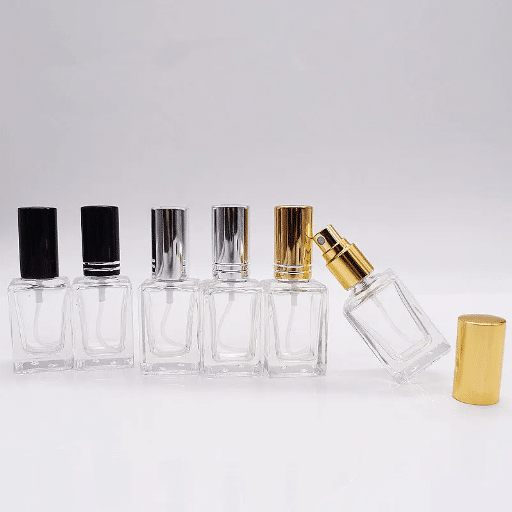
Use Appropriate Materials
Choose sturdy packaging materials that will not only withstand the rigors of transit but will also meet all your clients’ needs. For hazardous goods, UN-approved containers should be used and clearly marked with the appropriate hazard symbols and identification particulars.
Follow Regulatory Guidelines
Following the guidelines of international and local authorities, such as IATA, IMDG, or DOT, where applicable, is a must when transporting goods categorized as restricted or hazardous. It is essential that all documents, especially safety data sheets (SDS), are included in the consignment.
Prevent Leakage and Damage
Containers should be tightly sealed to prevent leakage, and the use of absorbent material or secondary containment may be necessary. Use proper protection from the inside with suitable packaging fillers for items that are easily damaged.
Maintain Label Accuracy
It is strongly recommended to tag packages with contents, shipping details, and handling instructions, if any. Warning labels are essential for informing handlers of the specific requirements during transport.
Monitor Environmental Conditions
For items that require temperature control, use insulated packaging and temperature-control solutions such as gel packs or dry ice. The product must be stored and transported in conditions that will not deviate from its requirements.
Compare Common Packaging Materials for Perfume
| Material | Durability | Cost-Effectiveness | Aesthetic Appeal | Environmental Impact | Leak-Resistance |
|---|---|---|---|---|---|
| Glass Bottles | High | Moderate | Premium | Recyclable, energy-intensive production | Excellent |
| Plastic Bottles | Moderate | Low | Variable | Non-recyclable variants pollute | Moderate |
| Metal Containers | High | Moderate to High | Luxury | Recyclable, durable | Excellent |
| Ceramic Bottles | High | High | Vintage Aesthetic | Recyclable but fragile | Good |
| Aluminum Cans | High | Low to Moderate | Sleek and Modern | Fully recyclable | Excellent |
| Paperboard Packaging | Low | High | Standard Aesthetic | Biodegradable and recyclable | Poor |
Importance of Proper Handling and Labeling
Proper handling and labeling of packaging materials not only ensure compliance with the mentioned regulations but are also essential for maintaining and improving consumer safety and operational efficiency. Among the consequences of the ever-present mislabeling or poor handling are contamination, the spread of incorrect disposal practices, and product contents that are cryptic to end-users, or all at once, depending on the case. Speaking of fragile items like glass or ceramics, it is essential to use the proper transport methods to minimize breakage. For recyclable materials, such as aluminum, separate them to keep the recycling stream undiluted.
The purpose of labeling is to provide vital information about the product, how to use it, where to store it, and different methods of disposal or recycling. In the case of the packaging, this information is crucial. The best strategy is to use QR codes or digital markers linked to the labels to provide product information and packaging details. Also, consistent labels, standardized by international methods, make it easier for global trade to flow through customs using internationally accepted symbols and classifications, such as those of ISO. The most crucial thing in writing and approving the LABELS is that they be done with the understanding that, very often, the labels will be the major vehicles for giving you the key to your customers’ trust, with the added effect of good public relations. Further, detailed and accurate labeling directly correlates with improved sustainability practices, consumer trust, and reduced operational risks.
Techniques for Securing Fragile Items in Transit
Ensuring the safety of delicate goods during transportation is a comprehensive process that relies on effective protective measures and materials to reduce the risk of damage. The use of cushioning materials, such as bubble wrap, foam inserts, or corrugated cardboard, to absorb shocks and vibrations, is a very popular technique. It is indeed wise to wrap the items separately, and even within the container, separation should be maintained so that no breakage occurs. Custom-fit packaging solutions, such as molded inserts or compartmentalized boxes, are the best way to reduce transit-induced movement and, in turn, the risk of damage.
Moreover, when used, robust external packaging materials, such as two-layered corrugated boxes, also guarantee the physical endurance of the packed goods on the outside. Another thing to mention is that the correct weight inside the container distributes the load, so there is no risk from opening and closing at storage and transportation points. Furthermore, tagging the parcel with signs reading “Fragile” or “Handle with Care” has been found to help prevent further damage. Moreover, the use of advanced technologies, such as shock and tilt sensors, to monitor handling conditions in real time can provide actionable data to improve accountability and reduce damage claims.
Cost Breakdown for Shipping Perfume Bottles
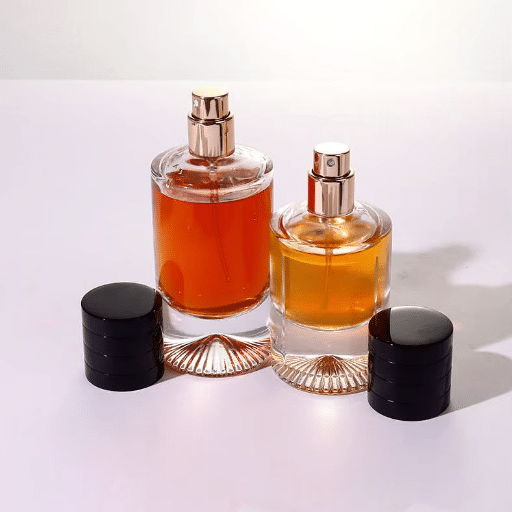
Packaging Materials
The use of expensive packaging materials, such as padding, boxes, and sealing tape, can increase the cost of each bottle by $2 to $5, depending on the level of protection needed.
Shipping Fees
The carrier’s charges are never fixed; they vary based on factors such as weight, distance, and service type. The average cost of shipping one bottle within the country is between $7 and $15, and for international shipping, you may have to pay a fee of $20 to $50, or more, depending on the location and customs policies.
Insurance Costs
It is advisable to ensure products that are delicate and fragile, such as perfume bottles. Usually, insurance costs constitute a whopping 1-3% of the value of the goods shipped.
Customs and Duties (for International Shipping)
For international shipments, you may also have to pay customs duties, taxes, and handling charges. The rates vary by destination country. These additional charges may range from $5 to $20 each time you ship a package, especially when handling luxury perfumes.
Labor and Handling
Goods preparation and the securing of shipments process are the actual workers behind the scenes. You can expect to pay $1 to $3 per bottle, depending on labor costs and operational efficiency.
Understanding Insurance Options for Shipping Perfume
It is a smart move to purchase insurance when transporting perfumes to reduce financial risks associated with the parcel’s loss or damage that sometimes accompanies this kind of activity. Accordingly, shipping insurance is available for common cases such as damage caused by mishandling, exposure to the elements, or theft. The insurance cost is usually based on the declared value of the parcel and the carrier’s practices; hence, it is generally between 1% and 3% of the object’s value. For example, for a $100 perfume bottle, the insurance charge may be between $1 and $3.
Some companies, such as FedEx and UPS, offer limited insurance coverage for their regular deliveries, usually up to $100. When the shipment’s cost exceeds this amount, they need to purchase additional insurance. Also, various insurance companies offer services that might be considered better options, with more coverage or lower rates than those of other companies. This can be an excellent benefit for companies that ship bulk orders or costly perfumes. They can get customized insurance policies.
To ensure the cargo has maximum coverage and the claim will be paid if needed, the shippers must document the perfume’s condition with photos and save the invoices and shipment tracking records in an easily accessible location. Moreover, choosing packaging materials that meet industry standards can reduce the risk of damage, preventing revenue losses that are not covered by insurance. Hence, it is like an additional layer of security.
Estimating Costs Based on Weight and Destination
To determine the appropriate shipping costs for a perfume, the two primary factors to consider are weight and destination, along with other external factors. Most logistics services calculate rates based on a combination of the package’s actual weight and its dimensional weight, which represents the space the package occupies during shipping. To illustrate, lighter but bulkier packages may incur higher charges due to their two-dimensional dimensions.
Destination’s importance is as much as the rates differ, not only because of the charges but also because of the regional and delivery-zone tariffs, whether within the border or to other borders. For deliveries within the same area, the price may be affected by distance and time. In contrast, for another country, customs clearance and import duties must also be considered. Proper cost estimation via e-commerce sites’ calculators and thus better compliance with budget constraints can be achieved. It will be efficient for the carrier to select its routes and operations based on the combined weight and destination-related pricing factors.
Navigating International Regulations for Shipping Perfume

Perfume shipping across borders falls under safety regulations according to IATA’s dangerous goods classification, which stipulates that alcohol-based perfumes are, in fact, flammable liquids. Certain things are compulsory to be done to meet the requirements:
Understand Shipping Restrictions
First, you need to make sure the importing country allows perfume imports. There are bans on importing perfume in some countries, while in others, it depends on the availability of specific documents or on labeling.
Follow Carrier Guidelines
Shipping dangerous goods is a significant concern, and leading carriers such as FedEx, UPS, and DHL offer step-by-step guidance on the subject. Make sure the perfume package is prepared according to their requirements – this usually means using UN-certified packaging and adhering to the quantity limits.
Provide Accurate Documentation
A Material Safety Data Sheet (MSDS) must be included with the parcel to document the hazards of its contents. In addition, the commercial invoice and any required customs forms should be duly completed to reduce time-consuming errors at customs.
Choose the Appropriate Service
Find a shipping provider specializing in hazardous materials. Ordinary transportation options may not be eligible for perfume delivery due to regulations prohibiting the disposal of harmful chemicals.
Abiding by these instructions not only ensures regulatory compliance but also makes the shipping process for international perfume shipments very easy.
Customs Declarations for Perfume Shipments
Being reliable and compliant with all global regulations is crucial when preparing customs documentation for perfume shipments. Perfume, being a flammable liquid under UN Code 1266, is, therefore, regulated and requires to be declared as Hazardous Material due to its alcohol content. Shippers have an imperative to provide a clear and detailed description of the product on the commercial invoice, state the appropriate Harmonized System (HS) code for perfumes, and declare the item’s value.
Furthermore, confirming the need for a Certificate of Origin or other licenses when some countries have import restrictions or impositions is very important. It is highly recommended to present quantities, weights, and volumes correctly in both metric and imperial units to facilitate understanding by various customs offices. If the proper paperwork is not completed, it may lead to delays, penalties, or the return of the shipment. Customs clearance can be made with ease, and the benefit of timely delivery of perfume products in the foreign market can be achieved if businesses stick to this criterion and keep their records very detailed and accurate.
Classifications of Perfumes as Hazardous Materials
Hazardous inflammatory perfumes are primarily classified as flammable goods because they contain high concentrations of ethanol and other volatile organic compounds (VOCs). Such attributes are the main reason perfumes are classified as dangerous goods under the world transport conventions, such as IATA regulations and IMDG. They have been arranged in the flammable liquids category, which is Class 3 under these regulations. The same rules also state that products with a flashpoint below 60°C (140°F), e.g., most perfumes, must be handled and packaged in accordance with the most rigorous safety measures.
Doing the right things and labelling correctly are essential when shipping perfumes. It is of utmost importance to have the correct hazard labels clearly visible on the packages, along with a Safety Data Sheet (SDS) that includes the product’s properties, risks, and handling requirements. Without the proper classifications, a product can be rejected, a company can be fined, or worse, lives can be lost. In light of the above, being an up-to-date shipper will lead you down the path to regulatory compliance, and hence, perfume products can be transported in compliance with the law.
Ensuring Compliance with International Shipping Standards
For businesses to ship internationally and meet requirements, they are advised to follow strict rules set by government bodies, such as the International Air Transport Association (IATA), the International Maritime Organization (IMO), and local governing entities in each shipment area. One good example is the IATA’s Dangerous Goods Regulations (DGR), which provide strict guidelines for classifying hazardous materials like perfumes into a specific UN number and packing instruction. Different kinds of documents, such as Shipper’s Declaration for Dangerous Goods, that reveal compliance with the shipments, are necessary.
Furthermore, the package is a key to maintaining compliance. To support prevention in transit, forwarders should use, for example, UN-approved and tested packaging types such as UN-certified tanks or big bags. Similarly, labeling the goods correctly and clearly—by featuring appropriate warning signs and handling instructions—is a must, and the inspection authorities closely supervise this stage. If a company does not meet the above-mentioned criteria for packaging and labeling, delays in handling or a catastrophe could become costly.
At the same time, being constantly informed about changes in the political and trade agreement landscape is a must, as they may be the reason tariffs, customs regulations, and allowed shipping lanes change. Using very secure shipping and cargo tracking systems and programs based on the latest technology enables a smooth supply chain and compliance with required global safety norms.
Choosing a Reliable Shipping Carrier

Evaluating a trustworthy shipping carrier is essential. Remember to find proof of their reputation in keeping deadlines, safe goods handling, and adherence to international regulations. Check whether the carriers provide service in the locations where you need them and are capable of handling goods that are dependent on the nature of the goods, e.g., temperature-sensitive or oversized goods. Moreover, review customers’ comments and industry certifications to assess how reliable the carriers are. Choose airlines with robust tracking systems and clear communication for complete visibility throughout the shipping process. Finally, do a cost comparison with quality and service reliability in mind, and choose the carrier that offers the best value for your money.
Evaluating Shipping Carriers for Perfume Shipments
When choosing a shipping company for perfume delivery, specific criteria must be carefully considered due to the very special nature of these products. Perfumes are generally regarded as hazardous materials (HazMat) because they can be combustible and contain alcohol, requiring strict shipping regulations, as outlined by the Department of Transportation (DOT) or the International Air Transport Association (IATA) for air shipments. Make sure the company you go with is authorized to handle HazMat and can, for instance, manage Shipping and Receiving or inventory through proper documentation—MSDS and the like.
Packaging is among the most critical factors, as perfumes must be handled with special care to prevent leaks or damage. The carriers you should be searching for are those that can offer the best packaging solutions for this kind of product, e.g., thermal insulation or shock-absorbent materials, and you should also ask them about their track record in shipping goods of similar categories. Another thing to be taken care of is the carrier’s use of climate-controlled shipping, which is the only way to ensure the fragrance remains safe throughout the conveyance, especially when the weather is rough.
The time and distance involved in the transportation should also fit the requirements of the order being shipped. If the carrier has some priority routes or can provide expedited services, then one would not need to worry about the product being exposed to the elements for long periods. An adequate amount of insurance is a must to a large extent, and it is done to avoid, or rather lessen, the financial burden associated with damage or delays. Having the option to choose customized insurance for luxury or high-value items is the best approach.
Importance of Carrier Track Record and Services
A carrier’s reference guarantees its trustworthiness, handling, and dependability in delivering high-quality services, which are the key factors in ensuring goods arrive safely and on time. There is specific historical data on the percentages of timely deliveries, complaints filed, and customer scores, which could be very helpful in assessing a carrier’s performance. Moreover, suppose companies offer special features such as temperature-controlled transportation or white-glove service. In that case, these can act as additional barriers, reducing the risk of damage or loss for fragile, valuable, or perishable items. The carrier’s use of a sophisticated tracking system and efficient customer service will tie this in with increased shipment visibility and control, which, in turn, makes for a smoother walk through the potential troubles of shipment. It becomes a key point to minimize risk and move toward excellence as the performance metrics and service facilities are analyzed.
Reference Sources
Future Perspective: Design Process of Perfume Packaging
Key Findings: This study explores the future of perfume packaging, focusing on emerging materials, printed electronics, and additive manufacturing. It highlights how these innovations can reduce costs, weight, and product damage during shipping.
Ensuring Halal Integrity in Perfume Retail: A Study on Key Factors and Implementation Strategies
Key Findings: This study examines the implementation of halal logistics in the perfume industry. It highlights the need for proper storage, risk management, and close partnerships to maintain halal compliance.
Frequently Asked Questions (FAQs)
How to Package a Bottle of Perfume for Safe Shipping?
If you want to pack a bottle of perfume safely, first wrap it in bubble wrap to protect it against the toughest impacts. Following this, it is necessary to insert the wrapped bottle into a rigid cardboard box that isn’t too tight, so there is no movement. There might be additional space to fill with packaging peanuts or crumpled paper to minimize the risk of the bottle moving while being carried. The box must be sealed with packing tape, and labels should be applied to it. Perfume sellers should consider working with a carrier specializing in dangerous goods to ensure compliance with legislation. Good packaging is not just about protecting your perfume; it also lets you rest assured that your product won’t be damaged during transportation.
What Are the Regulations for Shipping Perfume?
Shipping perfume is challenging because the item is classified as dangerous and must meet the strict standards for that classification. Firms like USPS also have their rules and restrictions on how to ship it safely and legally. One example is that perfume must be shipped by road in the USA, and at the same time, different international rules for the place of delivery may apply. It is therefore essential to be familiar with both the shipping company’s policies and those of the destination country to avoid being fined or having the package confiscated. In addition, make sure the labeling on your package is correct; understand the process, as different shipping costs may apply depending on the goods’ classification.
Can I Ship Multiple Perfumes Together?
It is indeed possible to ship several perfumes together; however, it requires careful handling to keep them safe. All the bottles must be carefully packed to ensure no breaking or leakage. An essential is a shipping box with enough cushioning for all the bottles. An alternative is to put a leakproof plastic bag around each bottle to contain any potential spills. When shipping perfumes internationally, one must rigorously adhere to the shipping regulations that apply to multiple items, since different countries may have different guidelines. Transforming your package into an appropriately labeled one and informing your shipping carrier can ensure all items are received whole and without any disturbances.
What Should I Use to Fill Empty Space in a Shipping Box for Perfume?
A bottle of perfume, when shipped, must be adequately packed in the shipping container so it doesn’t move during the trip. One excellent option would be to use packing peanuts, because they are the right shape for the contents and also act as a shock absorber. On the other hand, crumpled paper can also be used to fill holes and keep bottles from sliding. The main condition for the packing material is that it is sufficiently solid to prevent the perfume from falling or breaking during transport. A badly packed package may expose the bottle to some damage and consequently, result in a loss of revenue or even worse during transit. By using these materials correctly, one can be sure the perfume will arrive safely and sound.



